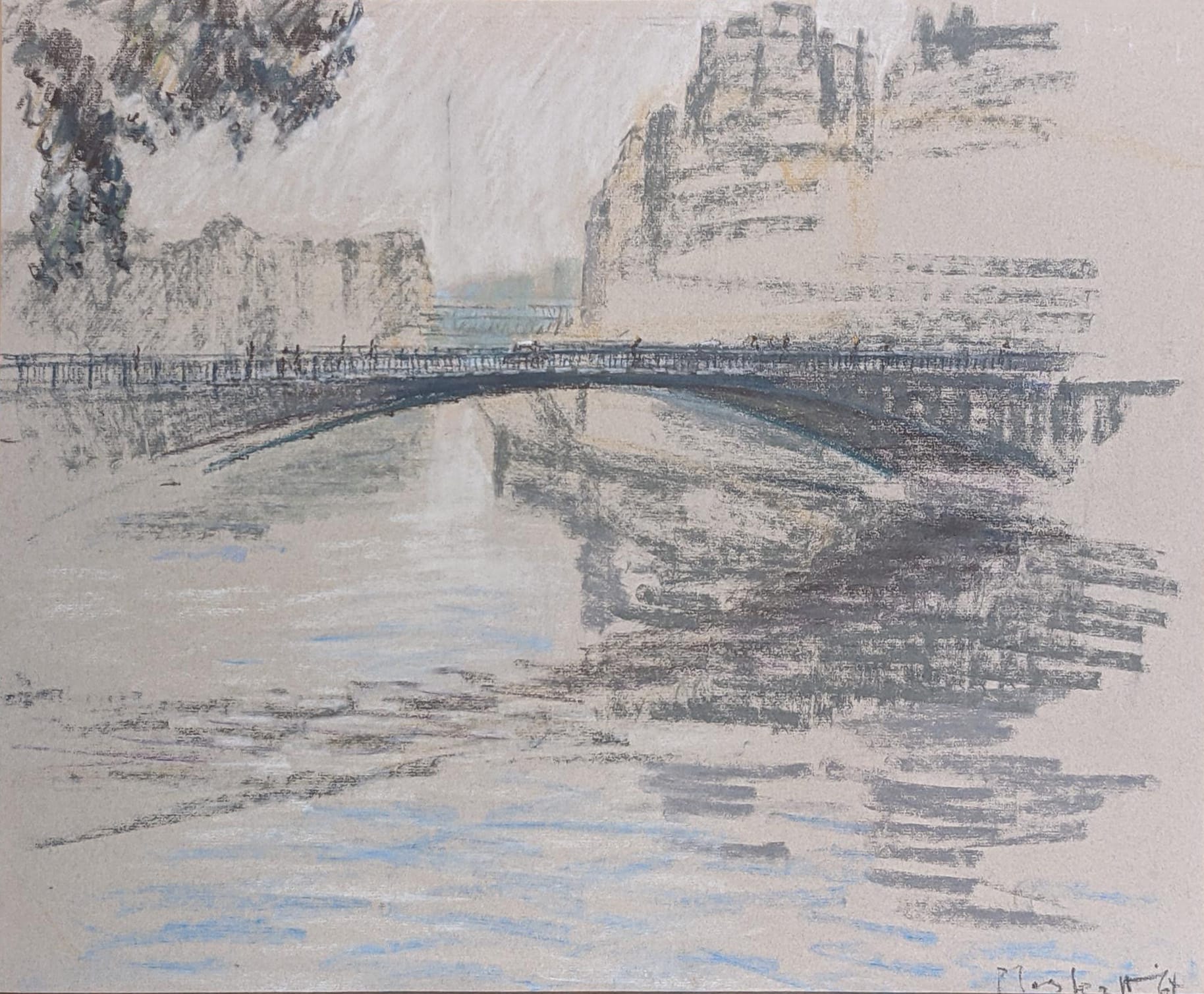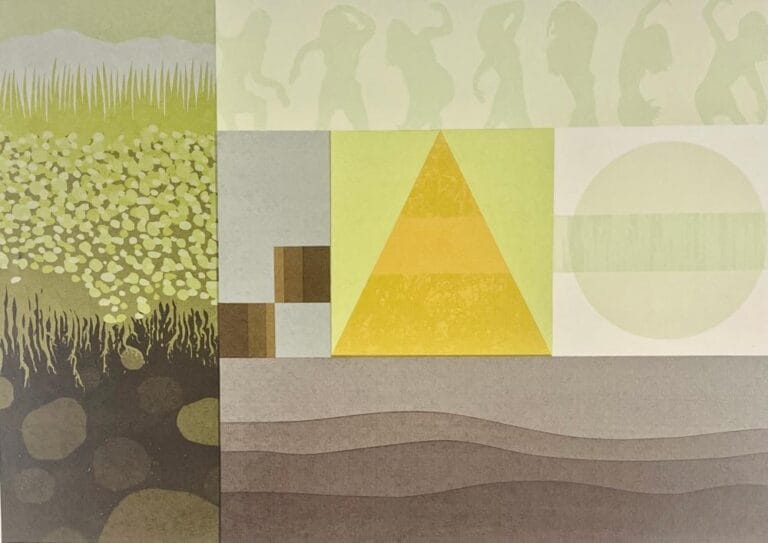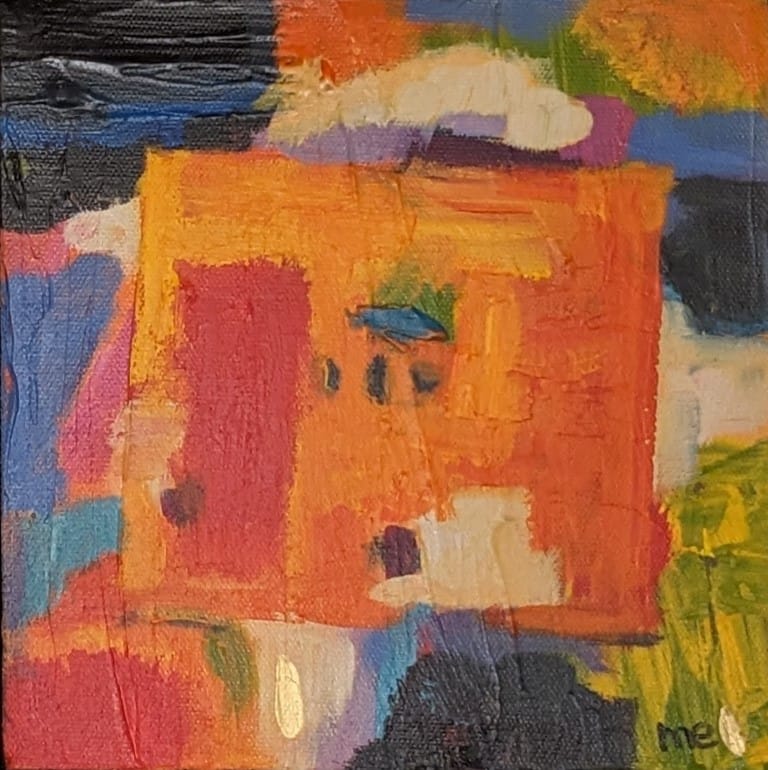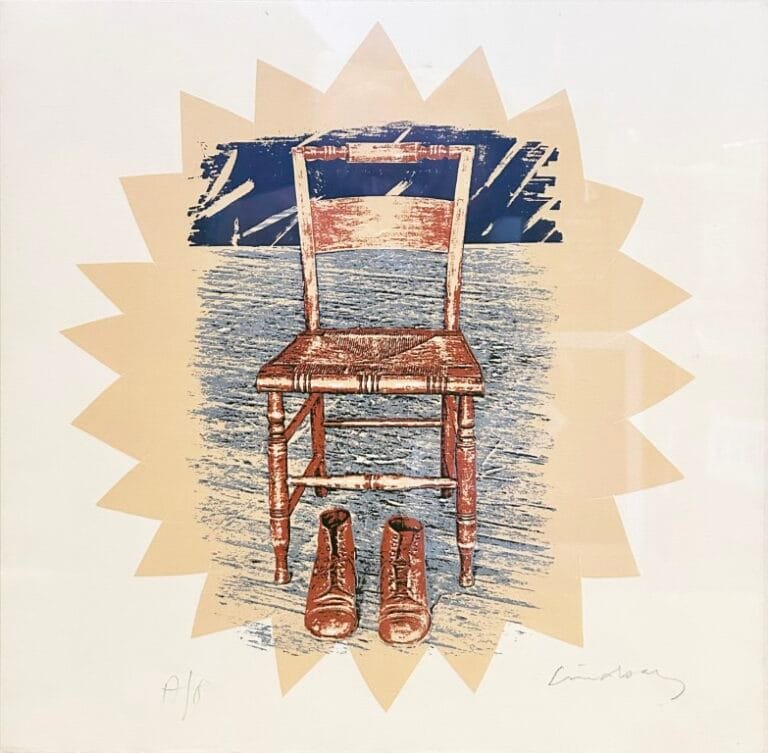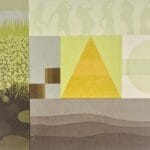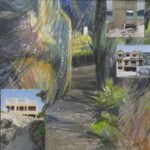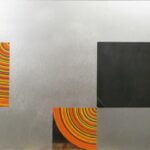1918-2014 → Joseph Plaskett’s figurative paintings are intimate expressions of everyday life – interiors, still life, and portraits of friends. The works are warmly human, full of light, form and colour, the images simple, timeless and universal. He often described his art as a search for “meaning” in colour, and once said, “Everything can happen within the space of a room”. While Plaskett’s subject matter remained fairly constant over the span of his 70-year career, his treatment of it changed from moody, dark and romanticized objects that were fully formed in the beginning, to a more bright, simplified and unusual juxtaposition of colours during his later years. His style initially embraced abstraction, became more realistic and romantic during his time living in Paris, and finally later works abandoned perspective and depth. He worked primarily in oils and pastels.
Born in 1918 in New Westminster, Plaskett graduated from the University of British Columbia with an honours degree in History and taught for six years. During this time, he took classes at the Vancouver School of Art, and in 1945 spent six weeks studying at the Banff School of Fine Art with Group of Seven member A.Y. Jackson. The following year, he won an Emily Carr scholarship on the recommendation of Lawren Harris, Group of Seven leader. This allowed him to spend time studying art in San Francisco, New York City and Provincetown, Massachusetts where he learned from noted abstract expressionist Hans Hofmann.
He became principal of the Winnipeg School of Art in 1947 but left in 1949 to live in Paris. By 1957 Plaskett was working as a full-time artist in the French capital and exhibiting and selling his work at private galleries in Vancouver, Toronto, Ottawa and Montreal. His home in Paris, owned jointly with fellow Canadian painter David Hill, was a sprawling four-story fifteenth-century house in the Marais quarter, and it was here that he would paint the evocative still lifes in pastels and oils that would earn him a reputation as a romantic impressionist. Much of his work from this period depicted “tablescapes” – the leftovers of meals shared at home with friends. Plaskett began spending more time in the UK at a Suffolk farm called The Cedars after David Hill’s death in 1977. He and Canadian artist Mario Doucet, his assistant and companion for the remainder of his life, transformed two acres of the property into a large garden that became the inspiration for his later work.
Since the 1940s, Plaskett had over 65 solo and group exhibitions. His works are in public art gallery collections from Prince Edward Island to Vancouver Island, including the National Gallery of Canada, the Beaverbrook Art Gallery, the Winnipeg Art Gallery, the Vancouver Art Gallery and the Art Gallery of Greater Victoria. He was appointed an Officer of the Order of Canada in 2001 for his excellence in the field of visual art. In 2004, he founded The Plaskett Foundation to provide support for Canadian visual artists. He died at his home in Suffolk in 2014 at the age of 96.
“The art that I make and that I see others make confirms the miracle of being alive. Almost every day I live in a state of exaltation. The art of painting is sacred to me. It is central to all the other visual arts. This art is in a constant state of renewal.” From the artist’s biography on The Plaskett Foundation’s website, dated April 3, 2008: https://www.joeplaskett.com/plaskett-award/about-joseph-plaskett/
For all you deep art divers out there.
More info on Joseph Plaskett + The Plaskett Foundation
The Canadian Art Preservation Foundation posts short biographies and information on artists and artwork from its collection in a not-so-subtle attempt to capture your attention and interest in our mission, but we also just want to keep this artwork in view. We are excited about the art we collect and want to share it with you. CAPF is a non-profit organization dedicated to preserving the artwork of Canada’s superstar artists for future generations to examine, study and exhibit – the ones you know and the ones you might not know so well. We accept artwork, journals, notes, letters, exhibition catalogues and anything else that might comprise a visual and/or intellectual “portrait” (ahem, please pardon the pun) of a particular artist.
View more artwork from our CAPF Collection and if you’d like, Donate Here.
We archive, preserve and promote Canadian art.
